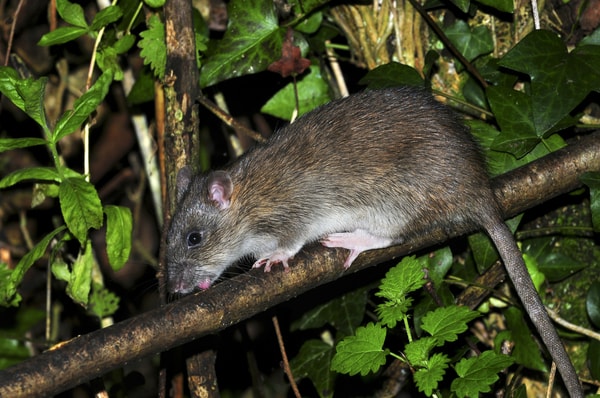
The Centers for Disease Control and Prevention lists the following diseases directly transmitted by rodents of concern in North America. Most pathogens are directly transmitted to humans by rodents either by rodent bite or inhalation or ingestion of infectious rodent urine and/or feces. It should be noted that some of the pathogens below (i.e., plague, tularemia) can also be transmitted to humans by arthropods (e.g., ticks, fleas).
- Hantavirus Pulmonary Syndrome (deer mouse, cotton rat, rice rat, white-footed mouse) - Pathogen: Virus
-
Leptospirosis (rodents and other animals) - Pathogen: Bacteria
- Lymphocytic Chorio-meningitis (house mouse) - Pathogen: Virus
- Plague (rock squirrels, prairie dogs, wood rats, ground squirrels, chipmunks) - Pathogen: Bacteria
- Rat Bite Fever (rats and possibly mice) - Pathogen: Bacteria
- Salmonellosis (rats and mice) - Pathogen: Bacteria
- Tularemia (muskrats, ground squirrels, beavers) - Pathogen: Bacteria
What Is Hantavirus Pulmonary Syndrome And How Is It Transmitted?
Hantavirus diseases are caused by various strains of hantaviruses. Sin Nombre virus (a hantavirus) is associated with Hantavirus Pulmonary Syndrome and occurs in the United States. Humans can become infected with hantaviruses by inhaling aerosolized urine, feces and/or saliva from infected rodents. In rare cases, hantaviruses can be transmitted to humans via rodent bite. Virus particles are persistent in the environment (e.g., dust that contains rodent excrement) and can be infectious for weeks.
What Activities Increase The Risk Of Contracting Hantavirus?
- Entering and/or cleaning a building (e.g., shed, cabin) that has not been in use for an extended period of time.
-
Cleaning an inhabited residence or other building that contains infectious rodents.
-
Performing construction or utility in areas that may be harboring rodents (e.g., crawl space, abandoned/vacant buildings).
- Camping in buildings (e.g., cabin or other vacant building) that have not been opened, cleaned and/or inhabited for an extended period.
Hantavirus Pulmonary Syndrome In The U.S. Between 1993 and 2015, there were 659 reported human cases (including 235 deaths) of Hantavirus Pulmonary Syndrome in the U.S. The highest incidences occurred in the western states of California, Colorado and New Mexico.
In November 2012, 10 cases (including three deaths) of hantavirus infection were confirmed in visitors to Yosemite National Park. Most of the cases occurred after visitors had stayed in camping cabins (from June–August) located in the park. The cabins likely harbored rodents that were infected with hantavirus.
In regions where hantaviruses are circulating in rodent populations, increased vigilance is needed to protect public health from this potentially dangerous health threat. Public knowledge of these dangers is important to protect health.


